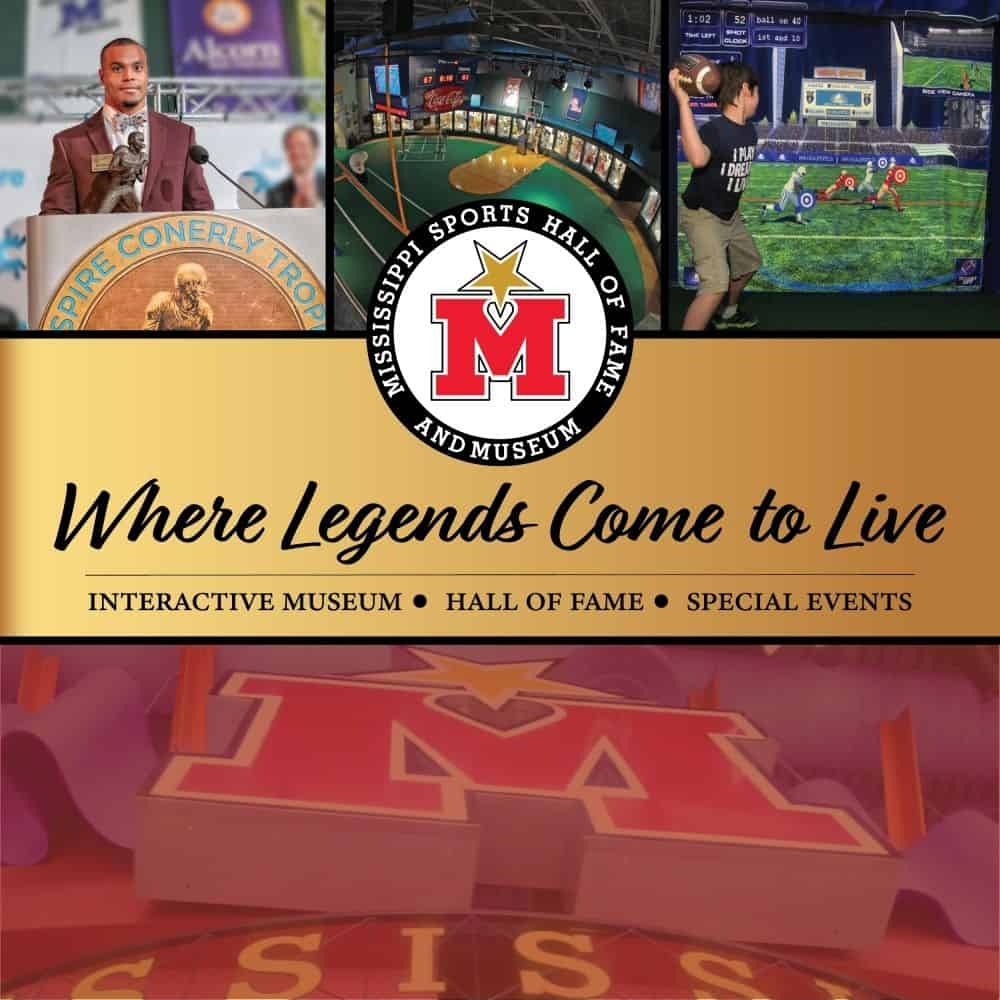
By Billy Watkins
Fellow sports writer Rick Cleveland posed the question to me recently on his and son Tyler Cleveland’s “Crooked Letter Sports” podcast they produce for Mississippi Today.
Rick wanted to know my favorite sports interview in a career that began in 1975. It didn’t take long for me to answer: Mississippi native Guy Bush.

His name will likely register only with hard core baseball fans. I hope this story helps change that, at least in his home state.
Bush’s career will forever be linked to New York Yankees legend Babe Ruth, considered by many to be the best home run hitter to ever play the game. Bush was part of Ruth’s “called shot” in the 1932 World Series.
But what Bush is known for most is giving up Ruth’s final two home runs — numbers 713 and 714, a record that stood for 39 years until Atlanta’s Hank Aaron hit No. 715 in April 1974 on his way to 755.
It should be emphasized that Bush, who stood 6-foot, 175 pounds, was a dandy pitcher, too. He won 176 games during a 17-year career — most of it spent with the Chicago Cubs, who signed him to a big-league contract in 1923. He won 20 games in 1933, 19 games in 1932, and 18 games twice. He had a fastball that moved and a “12 to 6” overhand curveball that gave batters fits.
As a sports writer with The Clarion Ledger, I drove to the north Mississippi town of Shannon and visited with Bush at his home in April 1983. He was 81 at the time but appeared ready to throw a few innings if needed.
His shoulders were thick. His hands seemed the size of a catcher’s mitt. He still had a full head of hair that had turned gray.
He talked of how baseball had turned soft in the early 1980s. Batters wore fancy batting helmets. Pitchers didn’t throw inside like they did in his day.
“There was no such thing as a batting helmet when I played,” he said. “ I would have thrown at them more. I’d love to hear that ball ring off that helmet.”
Whether it was on their own or ordered to do so by a manager, most pitchers in the 1930s had no problem trying to stick a baseball in a batter’s ear.
Remember, Bush played during the era of the Great Depression. Americans were angry and struggling. It spilled over in a lot of ways.
Bush told the story of Jim Bottomley, the National League Most Valuable Player in 1928 with the St. Louis Cardinals, coming to him before the two would face each other one afternoon.
“I just want you to know, I’ve got a wife and two kids,” Bottomley said to Bush. “And the way we play, you’re liable to kill me.”
Bush told Bottomley not to worry about it, that “we’ll just call it off.” Bush said he meant it at the time. But the truce lasted just four innings.
With a runner on second base in the fifth, Bush sent the first pitch at Bottomley’s head. Somehow, Bottomley escaped it.
“I’ve asked myself before if I really threw to hit a batter in the head,” Bush said. “Well, I don’t think I did, if you want to know the actual fact. But I throwed to scare them.”
************
Bush first saw Ruth in the 1932 World Series, . Bush was the losing pitcher in Game 1 at Yankee Stadium. He left in the sixth inning, trailing 5-2, after giving up an RBI single by Ruth and a home run by the great Lou Gehrig.
Bush said Ruth’s hit was a soft ground ball. “I threw him my overhand curveballs,” he explained. “You could see the space between his bat and the ball when he swung and missed. And when he did hit it, he topped everything.”
When he was’t pitching, Bush was one of the big league’s top bench jockeys — the guys who stood on the top step of the dugout and yelled insults at opposing players. His main verbal target in Game 3 of the Series at Wrigley field was Ruth.
Facing Charlie Root with the score tied in the fifth inning, Ruth decided to put a stop to Bush’s barbs. He stepped out of the batter’s box and pointed with his bat — some say toward the Wrigley Field bleachers, others say toward the Cubs’ dugout.
Bush was never sure but he thought Ruth was pointing at the bleachers.
But Root said Ruth aimed the bat at Bush. Pat Pieper, the Cubs’ ballpark announcer, was seated beside the Cubs” dugout. Pieper said Ruth stepped out of the box with two strikes on him and yelled at Bush before pointing and saying: “Watch this!”
Ruth hit the next pitch out of Wrigley Field, an estimated 490 feet.
Ruth called it the “funniest, proudest moment I ever had in baseball.”
The Yankees swept the Series in four games.
****************
Three years later, they faced off again in a regular-season game at the Pirates’ Forbes Field . Bush pitched for Pittsburgh and Ruth played for the Boston Braves after being released by the Yankees after the 1934 season. Ruth’s body was giving way and he was nowhere near the hitter he had been.
Bush offered no pity. He wanted to strike out Ruth with fastballs. No curveballs, just country hard ball.
“I had a feeling I was going to make a fool out of him,” he said.
Ruth had already homered off Red Lucas when Bush faced him for the first time that day. Ruth lifted Bush’s first pitch into the right field stands, 376 feet away.
Bush couldn’t believe it. He couldn’t wait to face him again.
Ruth came up again two innings later, and Bush’s first pitch was a fastball for a strike.
“He looked at it like it was a basketball coming in there,” Bush said.
Bush threw another fastball, same place as the first one — on the outside part of the plate and just below belt level.
“Right where the fat part of the bat could get it,” Bush said. “And, son, when hit that baseball, I wanna tell ya … I turned around to see just where it was going.”
Observers outside the ballpark said it traveled over the right field bleachers, hit the top of a house on Joncaire Street — more than 500 feet from home plate — and then bounced and rolled to a stop in the backyard of Henry DeOrio on Boundary Street.
DeOrio walked to the ballpark and was able to get Ruth’s autograph on the ball after the game. While the signature has faded, the ball is on display at the National Baseball Hall of Fame in Cooperstown, N,Y.
“That hit was super human,” Bush said.
Bush watched Ruth trot around the infield for what turned out to be the final time.
“He could hardly get around the bases, poor fellow,” Bush said. “When he rounded third base, I just took about two steps off the mound toward him. I took off my cap and just bowed to him. I said, ‘Babe, I’ve seen everything there is to see in baseball now.’ He looked at me and never said a word.”
Ruth retired eight days later.
“He was the greatest player I ever saw,” said Bush, who died July 2, 1985 in Shannon. “And he did it with such cool and calm. I just thought he was great.”
#################










